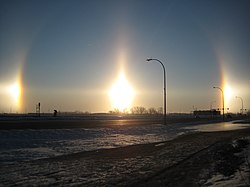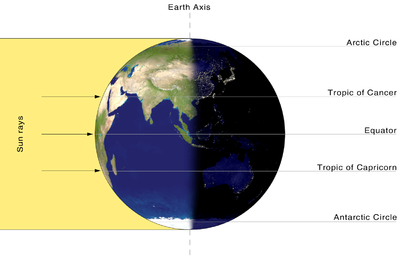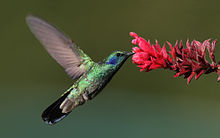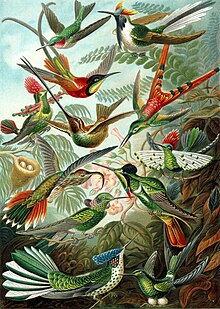 Hi Everybody!!
Some of the new people to birding may want to know how to feed the hummingbirds. Shared below is a Wikipedia page with the details. Every year I add new feeders as more birds come in. I estimate there are between 250 and 300 outside today. The adult males arrived about 10 days before the females and young began coming in. With all the new birds, there are still only 10 of the breeder males. They definitely run the show! Your photostudy is highlights from 8-19 (before the females came in). Enjoy!
Hi Everybody!!
Some of the new people to birding may want to know how to feed the hummingbirds. Shared below is a Wikipedia page with the details. Every year I add new feeders as more birds come in. I estimate there are between 250 and 300 outside today. The adult males arrived about 10 days before the females and young began coming in. With all the new birds, there are still only 10 of the breeder males. They definitely run the show! Your photostudy is highlights from 8-19 (before the females came in). Enjoy!
 Highlights of August 19, 2014
(Please go to album links for complete daily photostudy throughout the migration).
Highlights of August 19, 2014
(Please go to album links for complete daily photostudy throughout the migration).
https://plus.google.com/u/0/photos/117645114459863049265/albums/6057388208177114225

juvenile male flies to feeder where he hovers in place.



YUM!!

Adult Male Ruby-Throated Hummer
https://en.wikipedia.org/wiki/Hummingbird
Hummingbird
From Wikipedia, the free encyclopedia
Diet and specializations for food gathering[edit]
Hummingbirds drink
nectar, a sweet liquid inside certain flowers. Like bees, they are able to assess the amount of sugar in the nectar they eat; they normally reject flower types that produce nectar that is less than 10% sugar and prefer those whose sugar content is higher. Nectar is a mixture of
glucose,
fructose, and
sucrose, and is a poor source of
nutrients, so hummingbirds meet their needs for
protein,
amino acids,
vitamins,
minerals, etc. by preying on
insects and
spiders.
[58]
Hummingbird bill shapes vary dramatically, as an adaptation for specialized feeding. Some species, such as hermits (
Phaethornis spp.) have bills that are long allowing them to probe deep into flowers that have a long corolla.
Thornbills have short, sharp bills adapted for feeding from flowers with short
corollas and piercing the bases of longer ones. The sicklebills' extremely decurved bills are adapted to extracting nectar from the curved corollas of flowers in the family
Gesneriaceae. The bill of the
fiery-tailed awlbill has an upturned tip, as in the
avocets. The male
tooth-billed hummingbird has barracuda-like spikes at the tip of its long, straight bill.
The two halves of a hummingbird's bill have a pronounced overlap, with the lower half (
mandible) fitting tightly inside the upper half (
maxilla). When hummingbirds feed on nectar, the bill is usually opened only slightly, allowing the tongue to dart out and into the interior of flowers.
Hummingbirds drink with their tongue by rapidly lapping nectar. Their tongues have tubes which run down their lengths and help the hummingbirds drink the nectar. While it had been believed that capillary action was what drew nectar into these tubes, high-speed photography has revealed that the tubes open down their sides as the tongue goes into the nectar, and then close around the nectar, trapping it so it can be pulled back into the beak.
[59][60] Consequently, tongue flexibility enables accessing, transporting and unloading nectar.
[61]
Hummingbirds do not spend all day flying, as the energy cost would be prohibitive; the majority of their activity consists simply of sitting or perching. Hummingbirds eat many small meals and consume approximately half their weight in pure sugar (twice their weight in nectar, if the nectar is 25% sugar) each day.
[62] Hummingbirds digest their food rapidly due to their small size and high metabolism; a mean retention time (MRT) of less than an hour has been reported.
[63] Hummingbirds spend an average of 10–15% of their time feeding and 75–80% sitting and digesting.
Because they starve so easily, hummingbirds are highly attuned to food sources. Some species, including many found in North America, are territorial and will try to guard food sources (such as a feeder) against other hummingbirds, attempting to ensure a future food supply for itself.
Feeders and artificial nectar[edit]

Hummingbirds will either hover or perch to feed; red feeders are preferred, but colored liquid is not necessary.
In the wild, hummingbirds visit flowers for food, extracting
nectar, which is 55%
sucrose, 24%
glucose and 21%
fructose.
[64] Hummingbirds will also take sugar-water from
bird feeders. Such feeders allow people to observe and enjoy hummingbirds up close while providing the birds with a reliable source of energy, especially when flower blossoms are less abundant. A negative aspect of artificial feeders, however, is that the birds may seek less flower nectar for food, and so reduce the amount of
pollination their feeding naturally provides.
[65]
White granulated sugar is the best sweetener to use in hummingbird feeders. A ratio of 1 part sugar to 4 parts water (20% sugar) is a common recipe,
[66]although hummingbirds will defend feeders more aggressively when sugar content is at 35%, indicating preference for nectar with higher
sweetness and sugar content.
[67] Boiling and then cooling this mixture before use has been recommended to help deter the growth of
bacteria and
fungi. Powdered sugars contain corn starch as an anti-caking agent which can contribute to premature fermentation of the solution. Brown, turbinado, and "raw" sugars contain
iron, which can be deadly to hummingbirds if consumed over long periods.
[68] Honey is made by
bees from the nectar of flowers, but it is not good to use in feeders because when it is diluted with water,
microorganisms easily grow in it, causing it to spoil rapidly.
[69][70][71]
Red food dye is often added to homemade solutions, however is not necessary and may be harmful to the birds. Commercial products sold as "instant nectar" or "hummingbird food" may also contain
preservatives and/or artificial flavors as well as dyes. The long-term effects of these additives on hummingbirds have not been studied.
[72] Although some commercial products contain small amounts of nutritional additives, hummingbirds obtain all necessary nutrients from the insects they eat. This renders the added nutrients unnecessary in most situations.
[54]

Hummingbirds hovering at an artificial nectar feeder
Other animals also visit hummingbird feeders. Bees,
wasps, and
ants are attracted to the sugar-water and may crawl into the feeder, where they may become trapped and drown.
Orioles,
woodpeckers,
bananaquits, and other larger animals are known to drink from hummingbird feeders, sometimes tipping them and draining the liquid.
[73] In the southwestern United States, two species of nectar-drinking bats (
Leptonycteris yerbabuenae and
Choeronycteris mexicana) visit hummingbird feeders to supplement their natural diet of nectar and pollen from
saguaro cacti and
agaves.
[74]
Systematics[edit]
In traditional taxonomy, hummingbirds are placed in the order
Apodiformes, which also contains the
swifts. However, some taxonomists have separated them into their own order, Trochiliformes. Hummingbirds' wing bones are hollow and fragile, making fossilization difficult and leaving their evolutionary history poorly documented. Though scientists theorize that hummingbirds originated in South America, where there is the greatest species diversity, possible ancestors of extant hummingbirds may have lived in parts of Europe to what is southern
Russia today.
[7]
There are between 325 and 340 species of hummingbird, depending on taxonomic viewpoint, divided into two subfamilies, the
hermits (subfamily
Phaethornithinae, 34 species in six genera), and the
typical hummingbirds (subfamily
Trochilinae, all the others). However, recent phylogenetic analyses suggest that this division is slightly inaccurate, and that there are nine major
clades of hummingbirds: the
topazes and
jacobins, the hermits, the
mangoes, the coquettes, the brilliants, the giant hummingbird (
Patagona gigas), the
mountain-gems, the bees, and the emeralds.
[8] The topazes and jacobins combined have the oldest split with the rest of the hummingbirds. The hummingbird family has the second greatest number of species of any bird family on Earth (after the
tyrant flycatchers).
Fossil hummingbirds are known from the
Pleistocene of
Brazil and the
Bahamas; however, neither has yet been scientifically described, and there are fossils and subfossils of a few extant species known. Until recently, older fossils had not been securely identifiable as those of hummingbirds.
In 2004, Dr
Gerald Mayr of the
Senckenberg Museum in
Frankfurt am Main identified two 30-million-year-old hummingbird fossils and published his results in the journal
Science.
[9] The fossils of this primitive hummingbird species, named
Eurotrochilus inexpectatus ("unexpected European hummingbird"), had been sitting in a museum drawer in
Stuttgart; they had been unearthed in a clay pit at
Wiesloch–Frauenweiler, south of
Heidelberg,
Germany, and, because it was assumed that hummingbirds never occurred outside the Americas, were not recognized to be hummingbirds until Mayr took a closer look at them.
Fossils of birds not clearly assignable to either hummingbirds or a related, extinct family, the
Jungornithidae, have been found at the
Messel pit and in the
Caucasus, dating from 40–35
mya; this indicates that the split between these two lineages indeed occurred at that date. The areas where these early fossils have been found had a climate quite similar to that of the northern
Caribbean or southernmost
China during that time. The biggest remaining mystery at the present time is what happened to hummingbirds in the roughly 25 million years between the primitive
Eurotrochilus and the modern fossils. The astounding morphological adaptations, the decrease in size, and the dispersal to the Americas and extinction in Eurasia all occurred during this timespan.
DNA-DNA hybridization results
[10] suggest that the main radiation of South American hummingbirds took place at least partly in the
Miocene, some 12 to 13 million years ago, during the uplifting of the northern
Andes.
In 2013, a 50-million-year-old fossil bird unearthed in Wyoming was found to be a predecessor to both hummingbirds and swifts before the groups diverged.
[11]







guarding his feeder!

 ...this is brendasue signing off from Rainbow Creek. See you next time! Have a "Hummer Day"!!
...this is brendasue signing off from Rainbow Creek. See you next time! Have a "Hummer Day"!!

O+O


















































